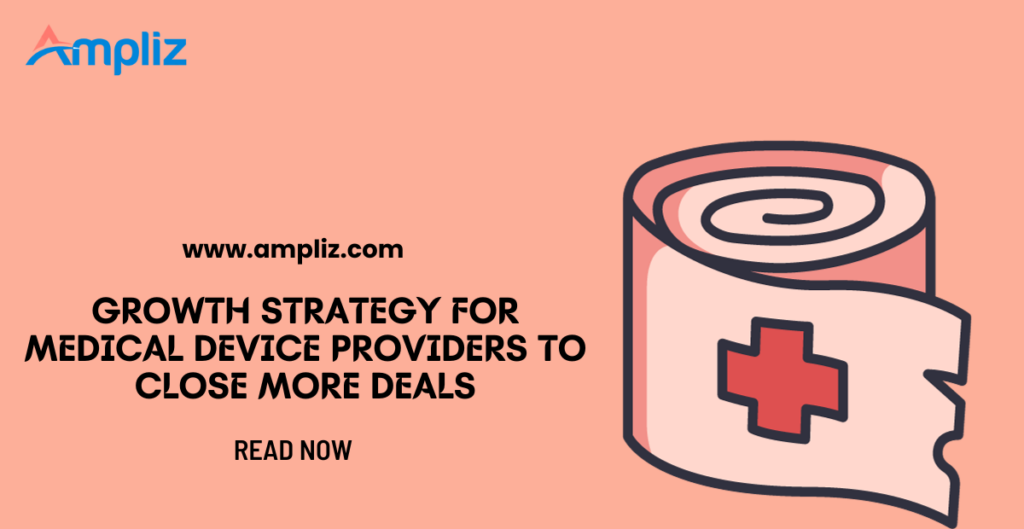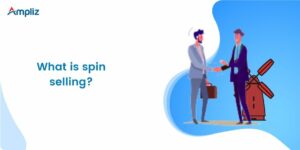Today, every medical device sales rep aims to surpass their sales goals to keep up with the increasingly competitive industry. However, meeting sales objectives and increasing profit can be easier said than done.
Closing sales requires out-of-the-box thinking and unique medical device sales growth strategies. Now that physicians and other medical professionals have access to more information, sales reps will need creative pitches that will pique their prospects’ interests.
This short guide aims to help medical device providers increase their sales by assisting them in developing a unique sales strategy. After reading, sales reps will know how to elevate their sales pitches to encourage prospects to buy. To get started, we will first examine the modern marketing challenges sales reps face when selling medical devices.
Marketing Challenges for Medical Device Sales Reps
Different bottlenecks hinder the movement of prospects through the sales pipeline. This section outlines these challenges to help sales reps prepare compelling sales pitches and help managers improve their sales strategy.
Staying updated on emerging medical technologies
New technologies are continually emerging, and there are constant product upgrades in the medical device industry. Businesses and sales reps must stay updated on the latest trends to create solutions that address medical professionals and their patients’ unique needs.
Being up-to-date can also make it easy for sales reps to explain how their products remain relevant to customers in the current medical landscape. Salespeople must also serve as credible sources of information for physicians and other potential customers in terms of medical technology. Otherwise, they will lose customer trust and credibility.
Unfortunately, keeping up can be easier said than done as manufacturers work hard to introduce new digital solutions and products that aim to make life easier for doctors and their patients.
Constant learning is crucial for sales reps aiming to keep their business ahead of the competition. By educating themselves on the topics relevant to their products, medical device providers will have relevant data to inform their sales strategies.
Forming strong customer relationships
Saravana Kumar, CEO of the software company Kovai, said customer acquisition within the SaaS industry could cost four to five times more than customer retention. Older studies back Kumar’s claim, with others saying that depending on the industry, customer acquisition can even be 25 times more costly than retaining existing ones.
The numbers highlight the importance of building robust relationships with current customers. Prioritizing customer retention over other metrics helps medical device providers save time, effort, and money.
However, forging customer relationships can be challenging, especially if your customers are doctors with little free time. Only a few physicians will give sales reps the time to pitch products effectively and make sales.
Adapting omnichannel sales strategies
The number of physicians who prefer in-person meetings with sales reps fell from 76 percent before the pandemic to 58 percent in 2021. Notably, the number of medical professionals who prefer communicating with salespeople through email, phone, video calls, or texts has increased.
Image from McKinsey & Company
This shift to remote communications highlights the importance of omnichannel sales strategies for medical device providers. If sales reps don’t use every channel they can to engage potential buyers, they may not meet their sales goals.
Enduring long sales cycles
Most medical devices are complex products with various intricate features. Unfortunately, that means it can take a long time for sales reps to educate potential customers about the benefits of their offerings.
This disadvantage can lead to long sales cycles, which can be discouraging and frustrating for salespeople. Moreover, there are medical device regulations that businesses must follow, contributing to a complex sales process.
Implementing personalized customer services
Another challenge medical device providers face is expected personalized sales pitches from prospects. Doctors and other medical practitioners want to know how new products and services solve their unique pain points. Sales reps who waste time discussing anything else will quickly be shut down.
Moreover, delivering personalized pitches takes skills and a lot of training. Some salespeople are encouraged to memorize a specific script that tells them what to say and what replies to give. They deliver the script word for word, which is now an ineffective sales strategy as prospects want something more.
Selling expensive products
The high price points of medical devices and solutions contribute to low closing rates. Sales reps now face the challenge of convincing potential customers that the company’s products are worth the expense.
Addressing this specific challenge is difficult in today’s economic climate, where budgets for healthcare are often tight.
Understanding complex products
One challenge sales reps must overcome is understanding the devices they are trying to sell. It is no secret that medical devices are elaborate technologies designed to help doctors remedy complicated ailments.
This fact puts salespeople in a complicated situation that requires them to grasp the medical conditions their products help address. They also have to understand and teach how the products work. Conveying this information to intelligent prospects, who will likely ask questions, can be intimidating.
Moreover, there are laws, regulations, and standards about data protection and patient rights in the field that medical device providers must consider when developing a strategy. These factors contribute to a complex sales process.
Increased competition
More entrepreneurs are trying to get into medtech sales because of the significant market growth of medical devices. In 2023, medical devices had a projected market volume of $471.80 billion, which could grow to $609.70 billion by 2028.
Image from Statista
This growth could mean increased competition between medical device providers. Sales reps must exceed their sales goals if they want to stay ahead of the curve.
Unfortunately, this feat can be easier said than done. Since fewer medical professionals prefer to meet in person, building strong customer relationships is more complicated. Salespeople must use all of the sales tools at their disposal to stay relevant and competitive.
Despite these crucial challenges in the MedTech field, there are also countless opportunities for sales growth. Sales reps with the skill and expertise to overcome difficulties can be highly successful and make a crucial difference in the lives of their customers and patients.
Effective Growth Strategies for Medical Device Sales
Knowing the challenges to overcome can help sales teams design cost-effective strategies. To help you get started, we outlined growth strategies you can use to help sales representatives succeed when introducing new medical devices to prospects.
Highlight patient benefits
Patients will always be a doctor’s top priority. Healthcare providers are interested in products and solutions that support their efforts to treat and cure patients. Sales reps must remember this idea during sales pitches so they can underscore how patients can benefit from their product.
When sales reps engage with physicians, they should start the discussion by highlighting the patient benefits. Mention how the devices can help manage pain, accelerate recovery time, or improve the patient’s quality of life.
This tactic will put sales representatives in a good light because it shows empathy. It also shows that your strategy aligns with your customers’ goals to help patients get better.
Get a deep understanding of the buyer’s journey
One of the most effective ways to boost your close rate is to sell in a way that encourages your potential customers to make a purchase. To achieve this feat, you must first understand where your prospects are in the buyer’s journey. This way, you will know the best sales approach that will ultimately lead to conversion.
The following are the three stages of the buyer’s journey. Read on to learn the most appropriate sales method for each step.
- Awareness stage
At this stage, prospects are trying to determine the issues or challenges they are experiencing. This process may lead them to subscribe to your newsletter or offer their contact details to get premium content that will give them more information about their problems.
Your role at this phase is to engage the new leads by helping them identify their issues. Start by prioritizing potential buyers with problems that your solutions can help solve. Then, you can get back to other qualified leads and talk to them about the troubles they are trying to address.
- Consideration stage
At this stage, leads have recognized their issues and are seeking solutions or remedies. Remember that the leads in this phase are not immediately looking for a product. They are exploring their options and determining the appropriate solution to implement.
During this phase, your role is to engage active leads on the buyer’s journey. Prospects become active leads once they complete a trackable action online, like opening a lead-nurturing email or saving and installing exclusive content from your website.
Sales reps should also start exploratory discussions with potential clients to better understand their difficulties, goals, and solutions to the troubles they have identified. This strategy will allow sales teams to provide potential customers with valuable insights unavailable online while building trust with prospects.
- Choice stage
At this stage, prospects have created a category of solutions. They have studied specific medical device solutions based on their problems and needs.
You can identify your leads’ unique difficulties and standing at this phase. This advantage allows you to develop a sales pitch demonstrating how your product and services can help them.
Remember that prospects already know the general advantages of using your product because this information is probably available online. When making a pitch, use a personalized tactic highlighting how your product can address the unique pain points of your target audience.
Prioritize sharing fascinating information about your offering and underscore how your solutions are better than your competitors.
Focus on providing solutions, not products
Understanding your customer’s buying path allows you to identify their specific needs. Knowing the fundamental differences between your customer’s everyday challenges and goals is crucial in planning how to share a possible solution with them and developing a buyer profile.
For example, a general practitioner is considering buying practice management software. It is most likely that their significant challenges will involve increasing efficiency, conserving time, and getting more organized.
With this information, sales reps know that this prospect will not care whether the software program has appealing typefaces or an eye-catching user interface. They will only care about how the product can help organize their files and save time.
This example shows that when creating presentations, infographics, and other marketing materials, sales reps must spend less time discussing the product’s functions. Think about how they can present the product in a way that addresses specific customer needs. Consider the main problem the customer is trying to address, then pose the product as a solution.
This strategy makes sales reps look at the sales process from the customer’s perspective and how they consider products, not the other way around.
Talk to decision-makers in person
As a sales rep, you must know how to write personalized emails and make non-intrusive phone calls to prospects. However, these engagement techniques can only take you so far. If you want to get ahead of your competitors, consider meeting with your potential customers in person.
Aside from sending emails and making phone calls, talking to a prospect in person can help develop a personal link with leads. This strategy can help increase your chances of closing more deals.
Now that more prospects prefer communication through email or calls, sales reps must make the most out of the in-person meetings they get. All modern medical device sales reps should know how to talk to prospects face-to-face.
Develop a lead-nurturing strategy
Keeping prospects engaged is crucial, especially for medical device providers trying to sell to busy doctors. To successfully engage leads, sales reps should send personalized lead-nurturing emails.
These messages can contain various content, such as news, video clips, or blog posts that prospects can find helpful and relevant. Remember to write eye-catching subject lines that will help capture the attention of your prospects and encourage them to open the email, click on the calls-to-action (CTAS), and make a purchase.
Create Effective Sales Strategies and Boost Conversion
The medical device industry is ever-changing, and modern sales teams must learn how to adapt. They must develop a sales strategy that allows them to connect with their prospects anytime and anywhere. This way, building positive customer relationships can be easier, and your business remains ahead of the competition.



